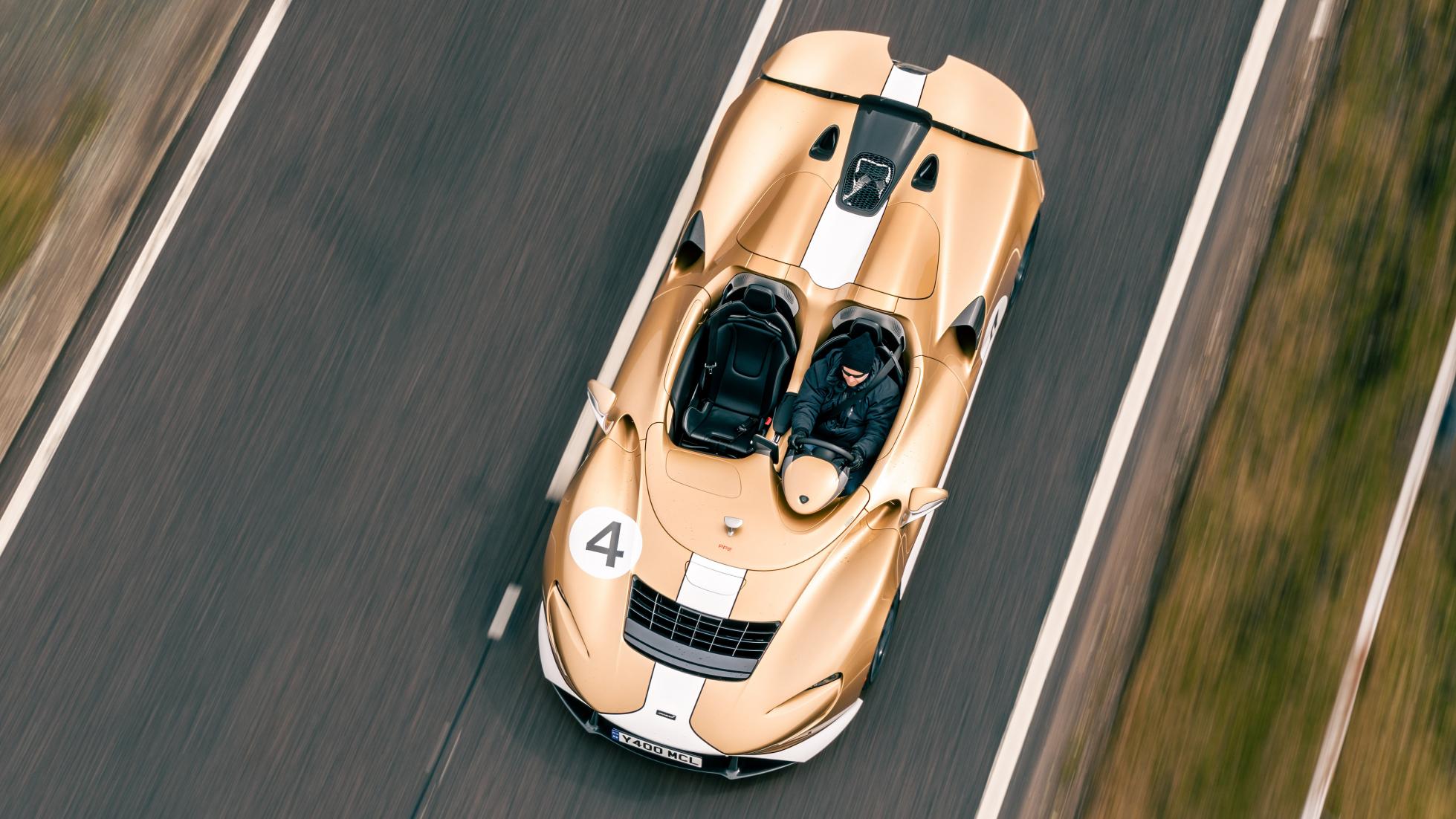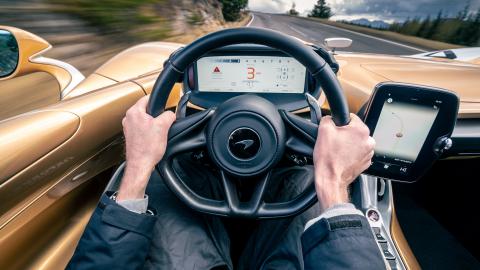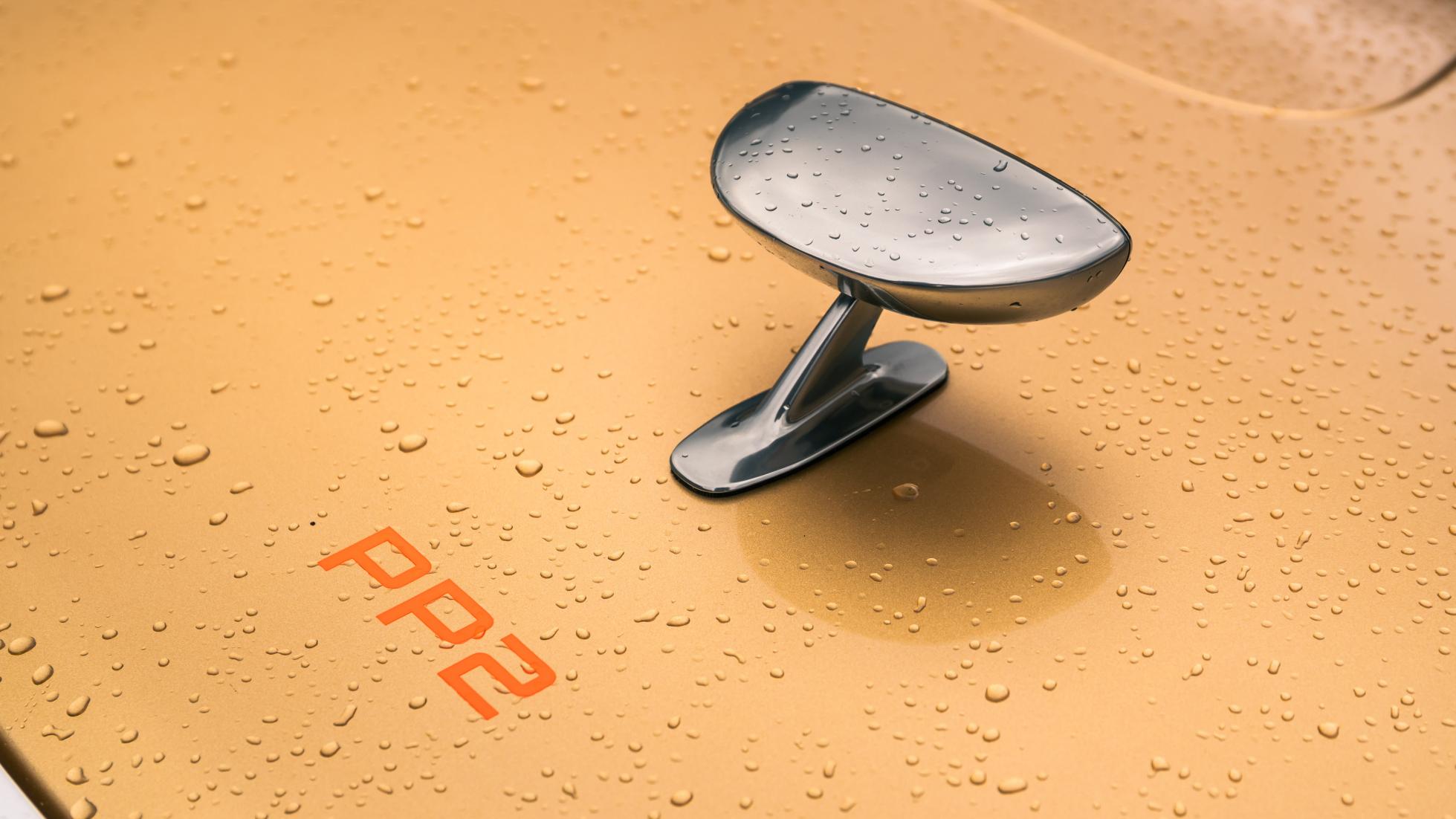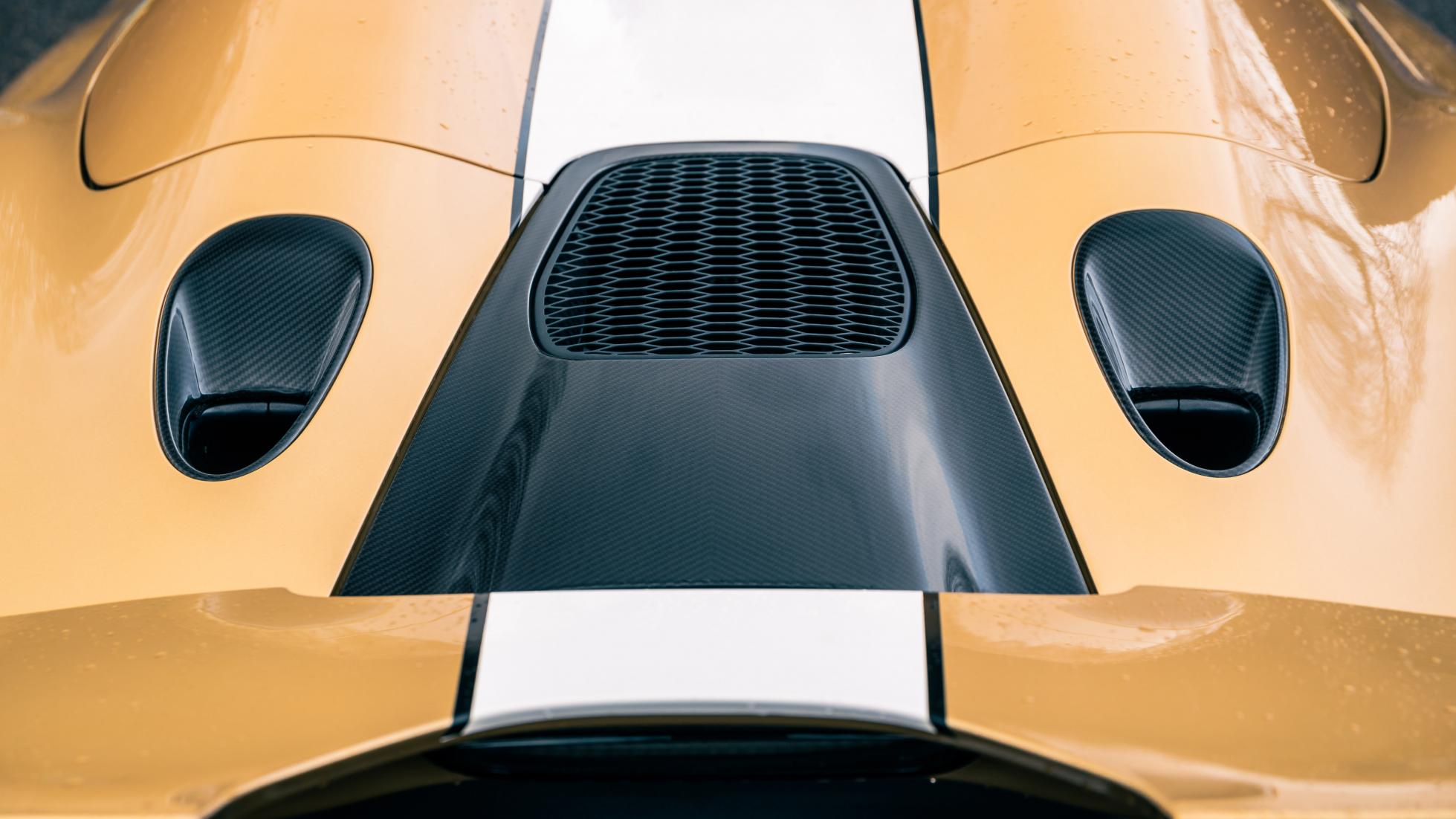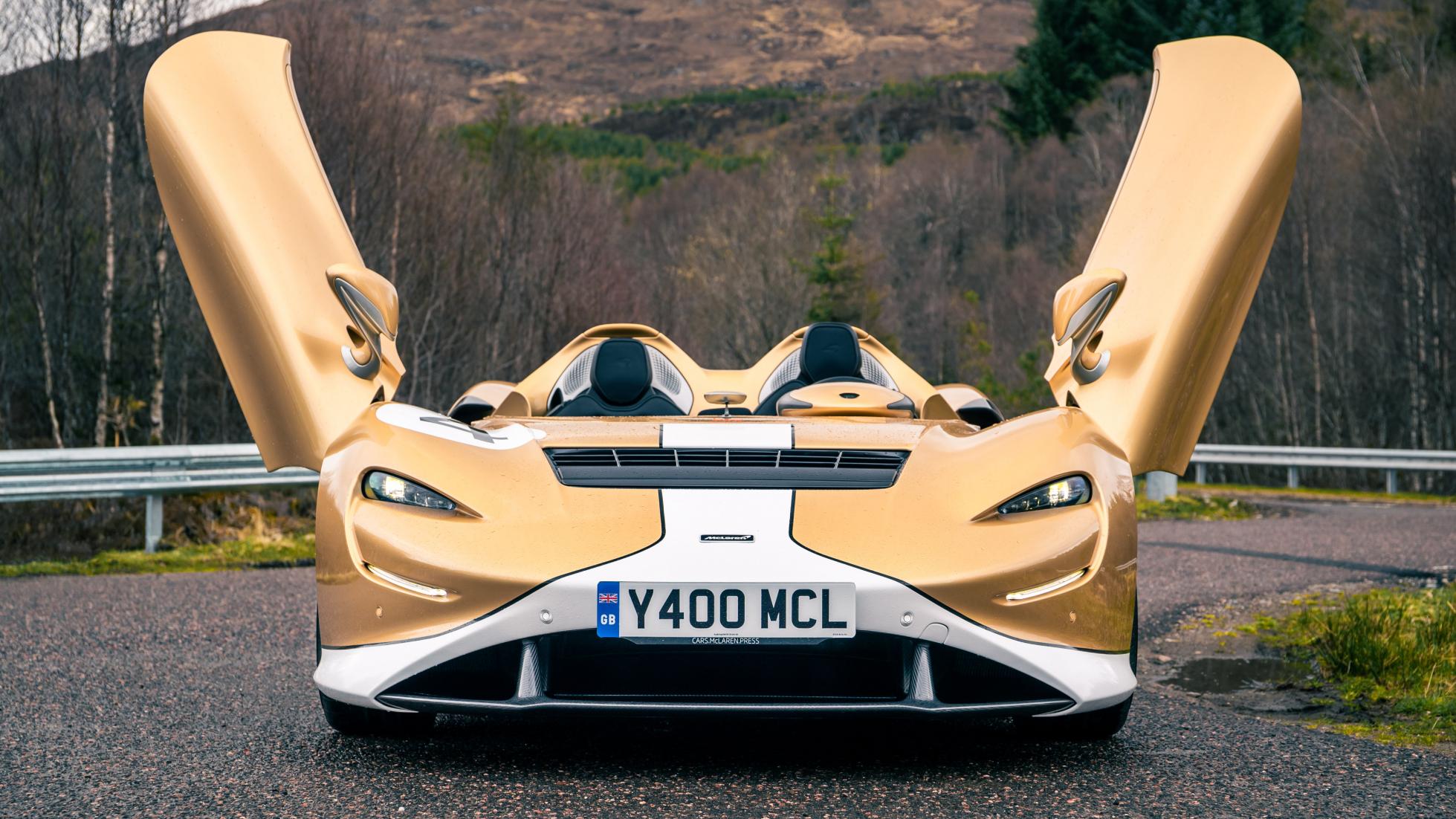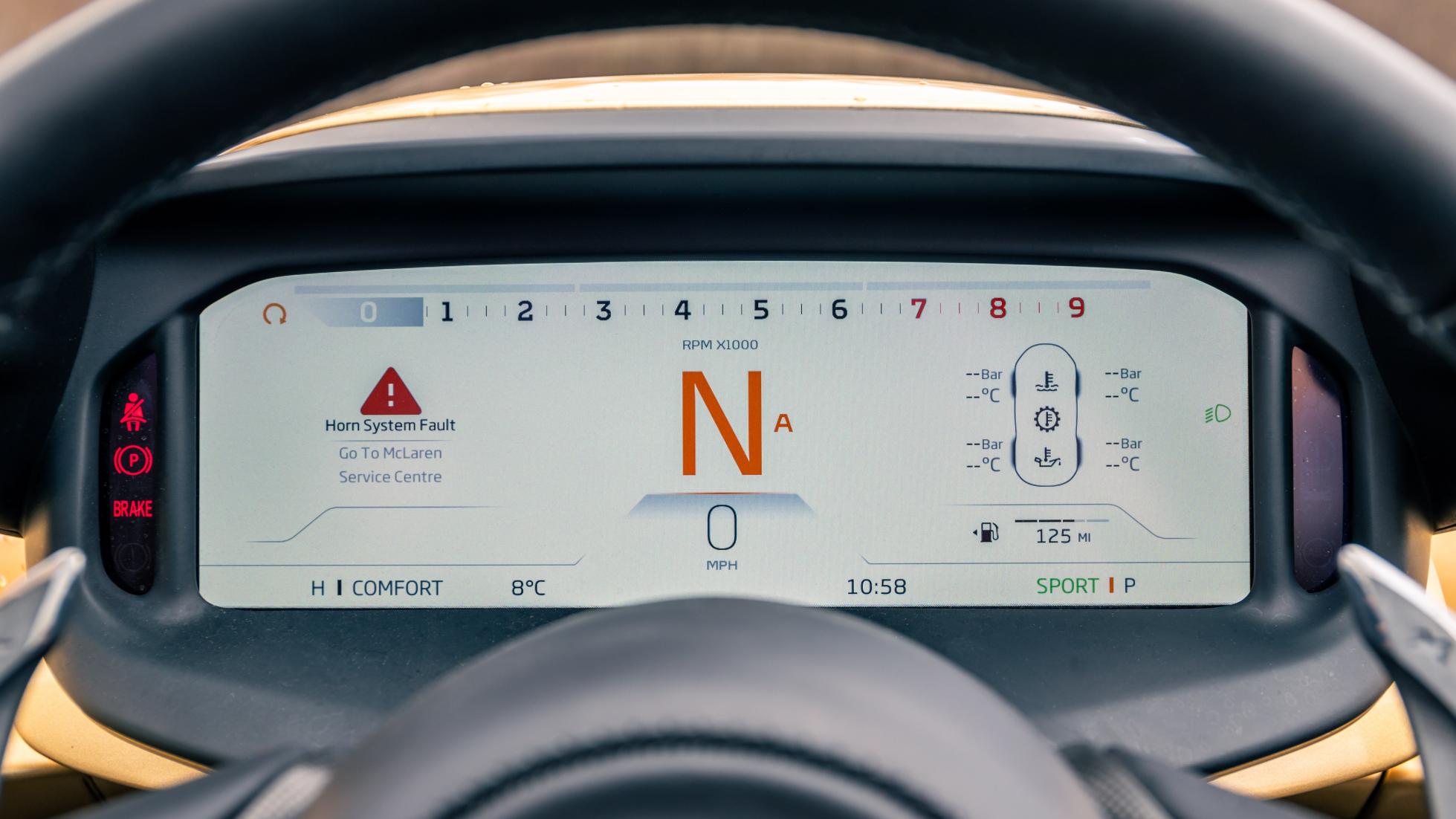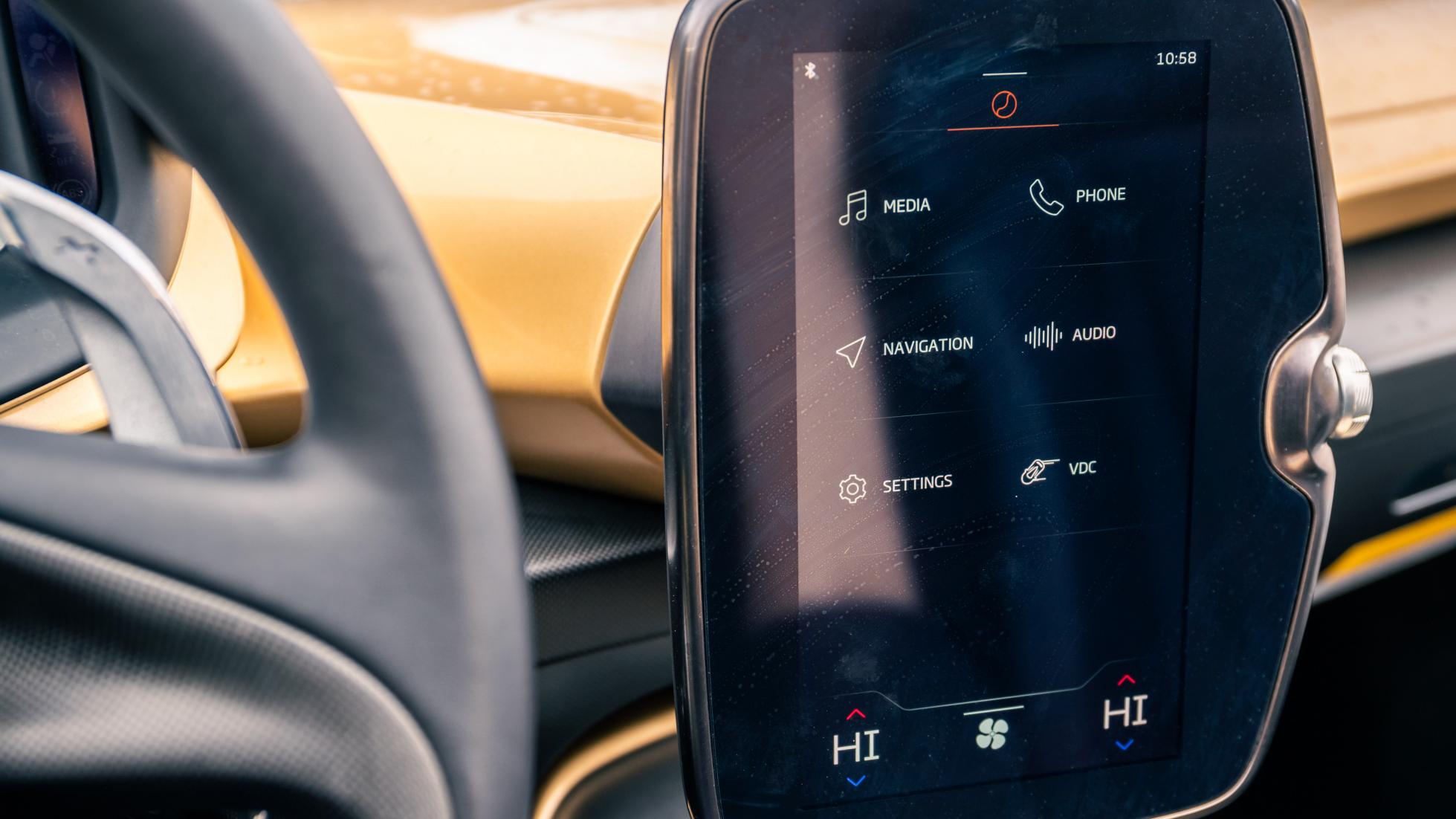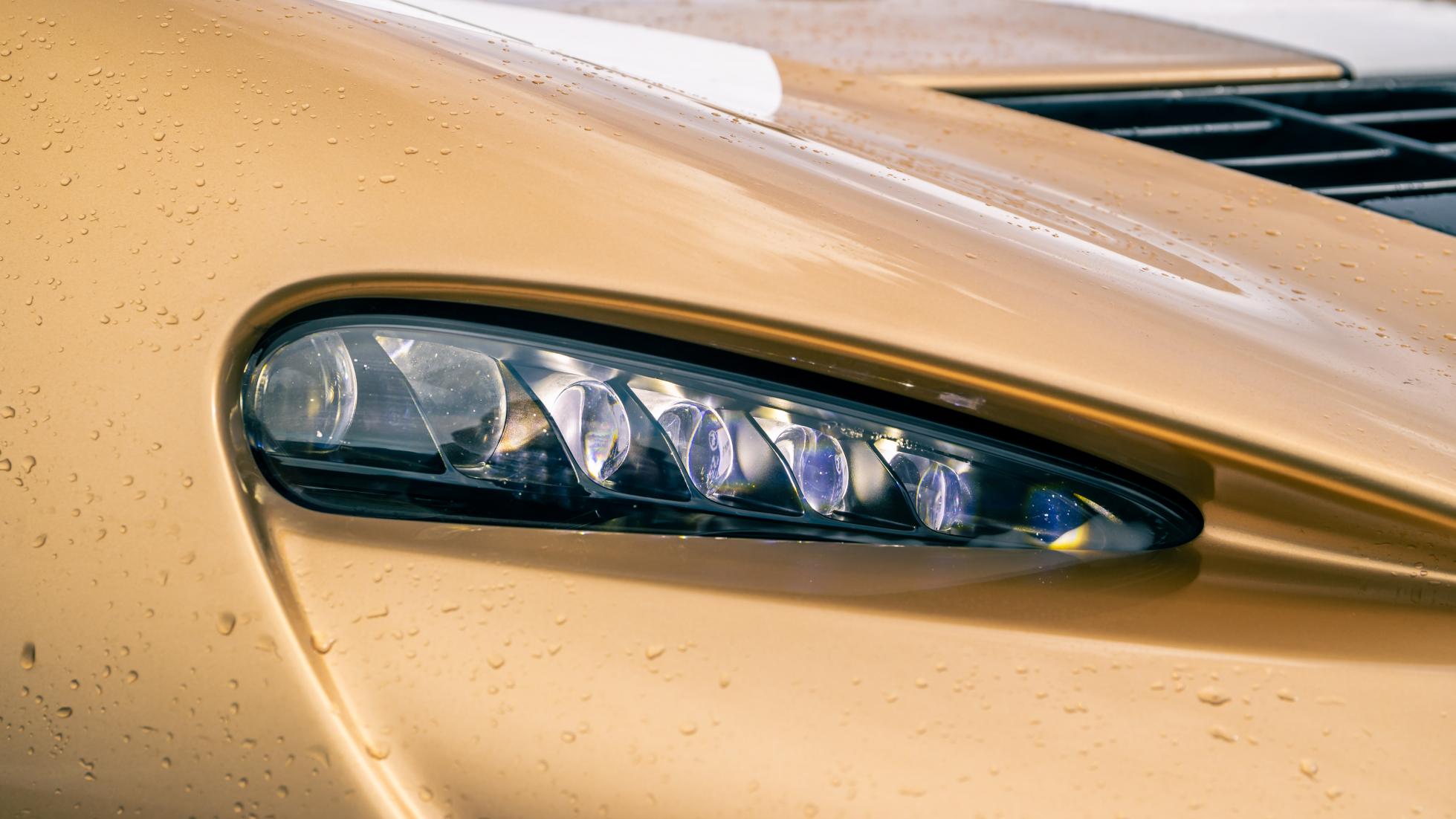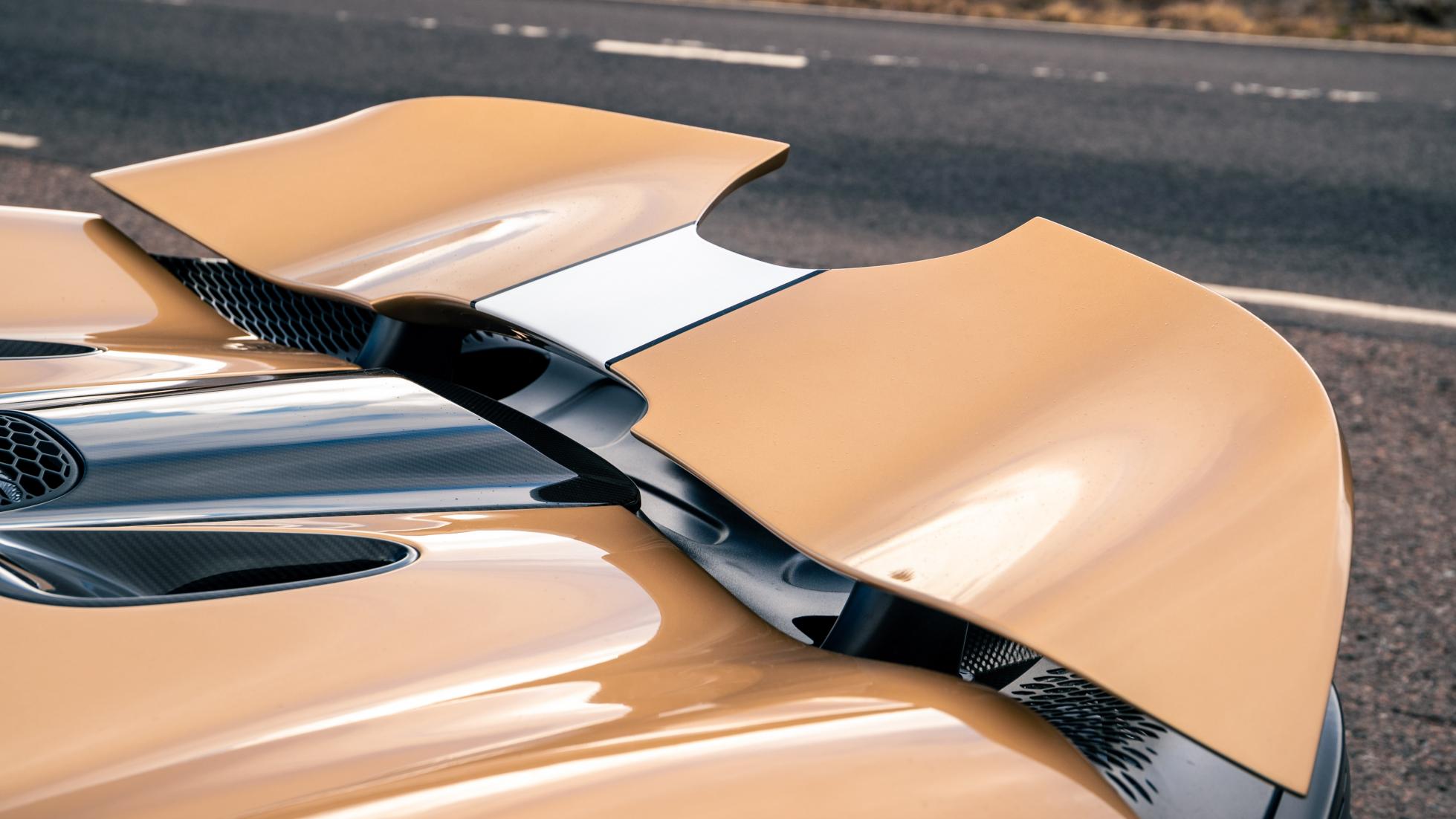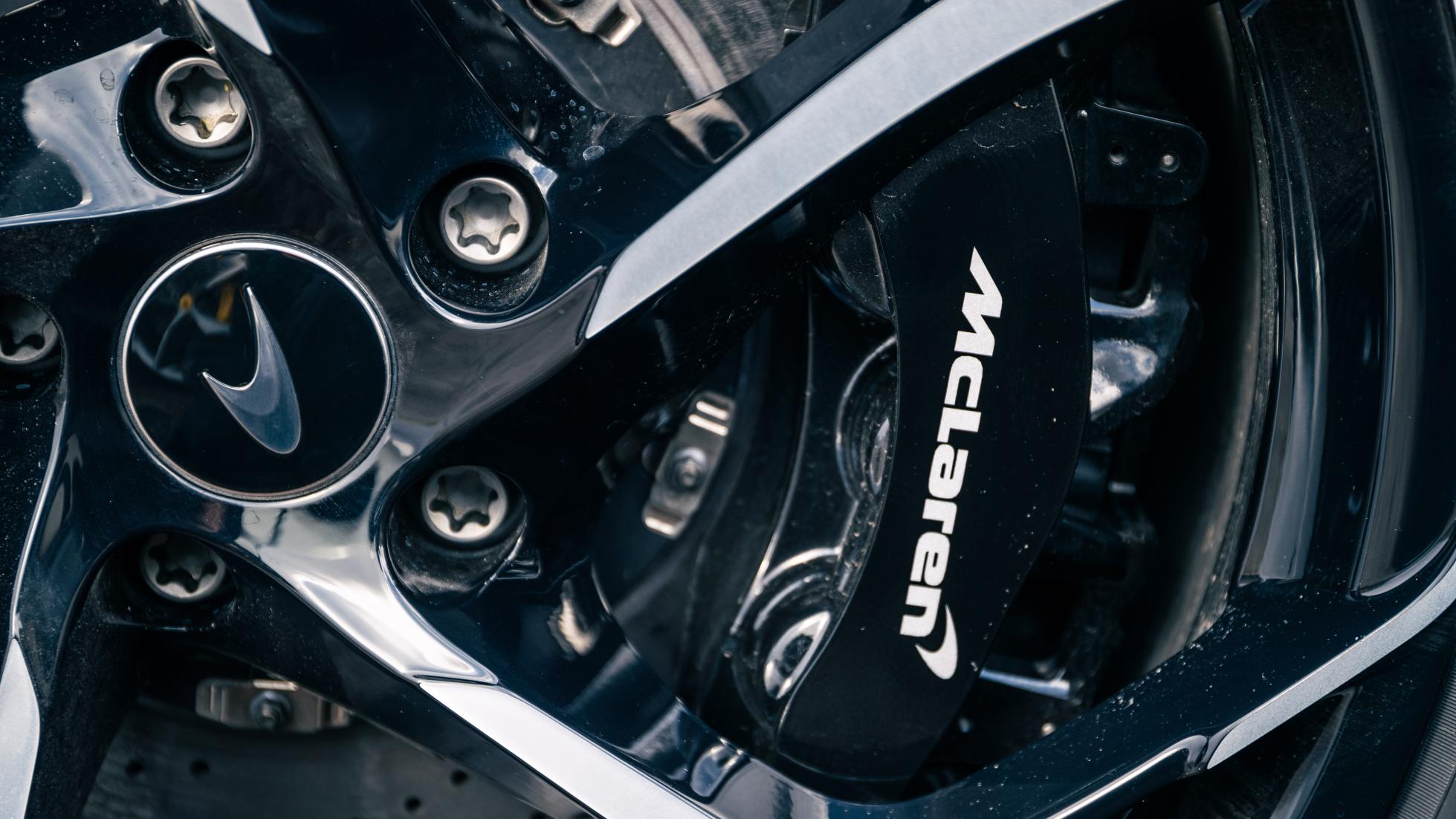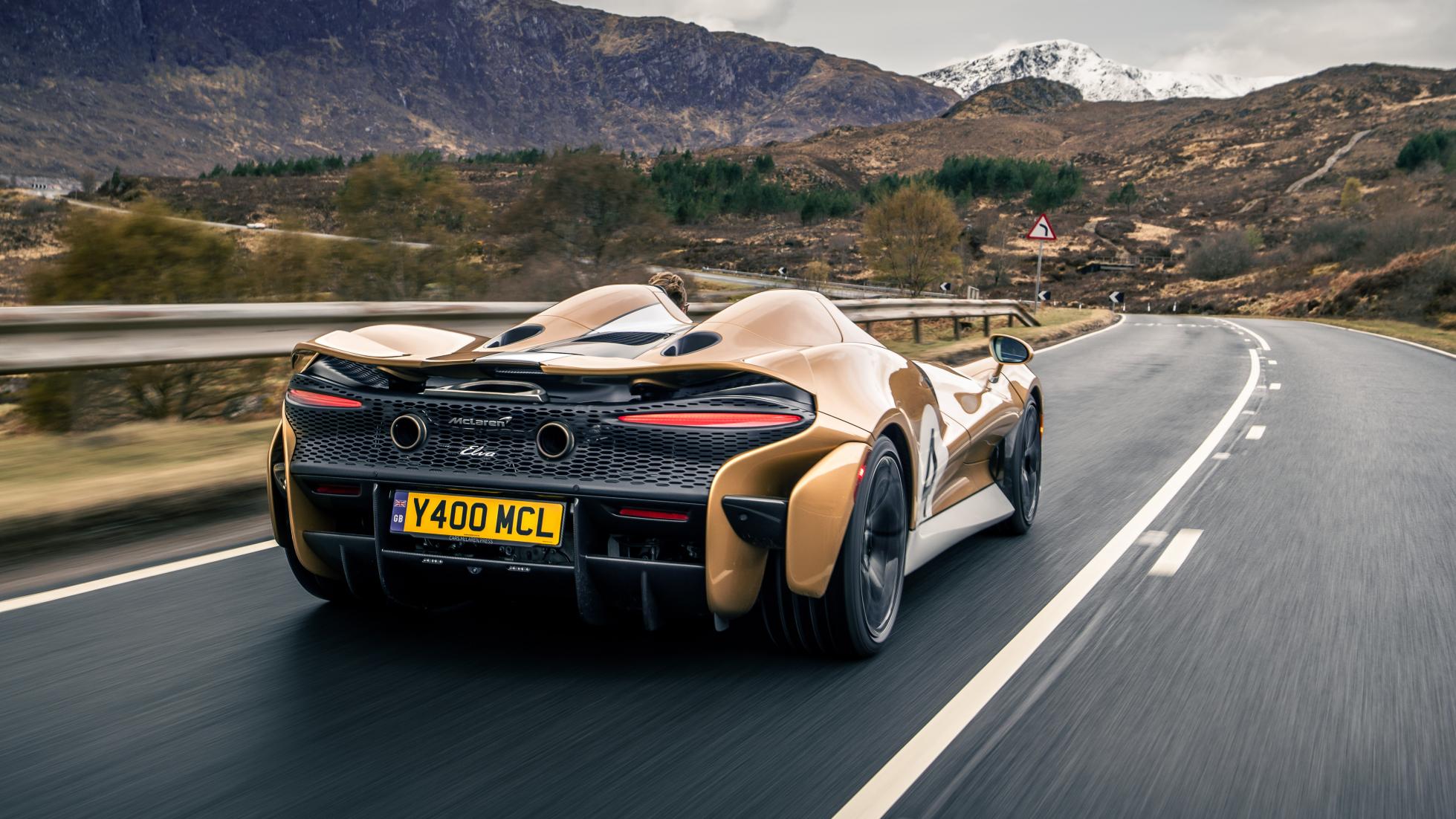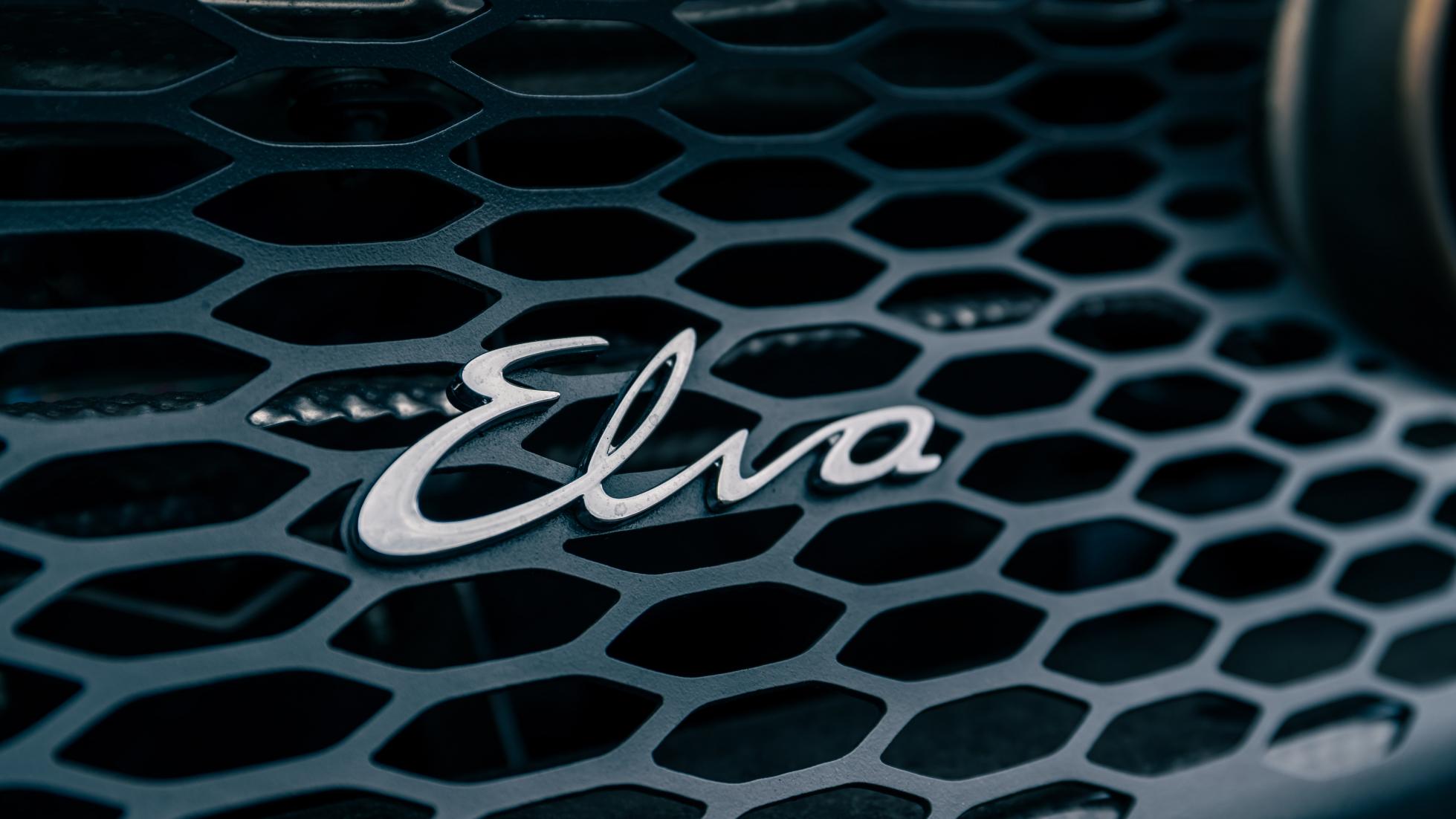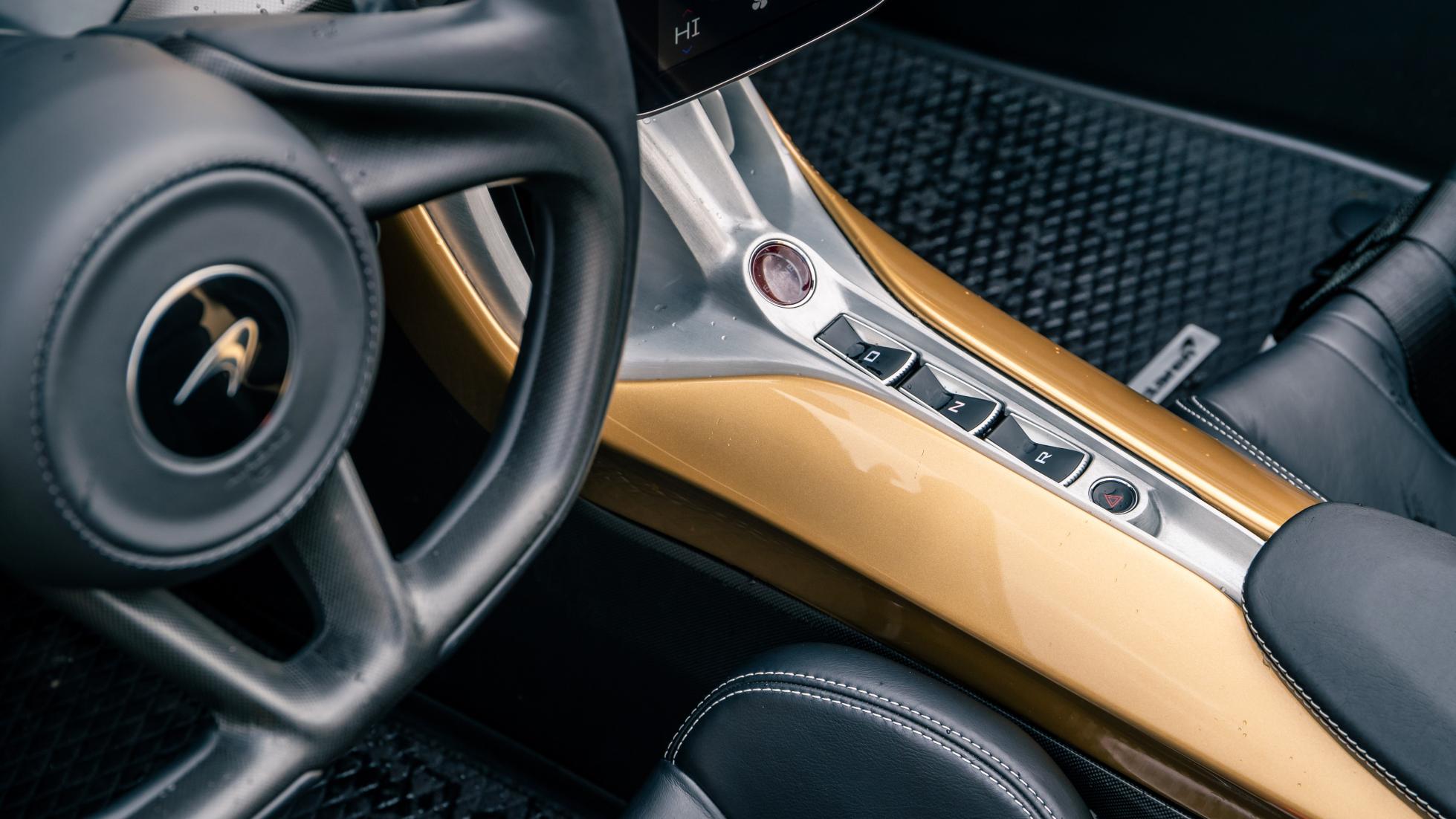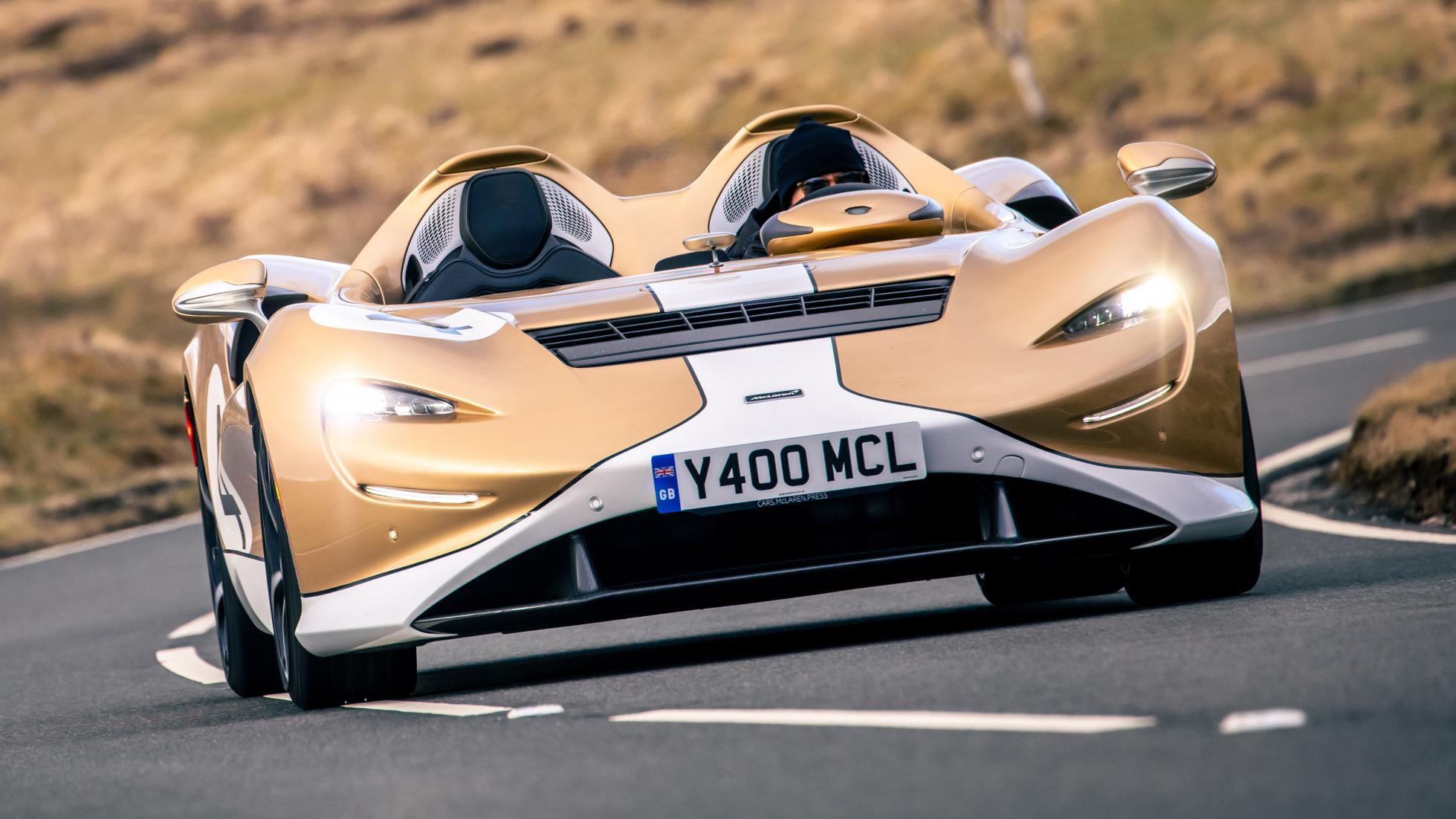
OVERVIEW – What is it?
It’s McLaren’s take on the wild speedster storm that’s currently swirling around Planet Car.
In a bid to keep up with the windscreenless Joneses like the Lamborghini SC20, Ferrari Monza and Aston Martin Speedster (but following in the wake of the outlandish Aventador J, Mercedes-Benz SLR McLaren Stirling Moss from a decade ago), this is what happens when McLaren snips off a Senna’s wings and dive planes, scalps off the roof, rips out the windscreen and then throws in some mad air management and engineering to try and make all that visual hypocrisy and performance work.
It’s called the Elva (a nod to the French ’Elle Va’, meaning ’She Goes’) and to put it bluntly: it’s utterly crackers.
Officially, it’s the fifth car in McLaren’s Ultimate Series, following on from the OG F1 back in 1994 and has the demonic P1, physics-upsetting Senna and stretched Speedtail as forebears. With 804bhp, it’s the most powerful non-hybrid McLaren ever.
But it’s also the lightest since the McLaren F1, perching on the scales at 1269kg. Expensive too, costing £1,425,000 (RM8.2 million). Elvas are also rare. And – weirdly – have only been getting rarer. And that’s before people have even had the chance to start crashing them.
Initially, McLaren was going to build 399. Then it announced it would actually be only 249 units. But that’s since been reduced down by another 100, to just 149 units. And they’re still not all accounted for. Given there’s plenty of money sloshing around the world currently, what gives?
Probably the fact it’s got no windscreen: a daunting (and seemingly pointless) prospect for some. But other than the lack of glass in front of your face and some tin over your head, there’s nothing that’s too unfamiliar to the McLaren fold. But again, that might be another reason they’re not all sold.
The engine is the same hairy 804bhp twin-turbo V8 as the Senna, connected to the same seven-speed gearbox, while the brakes are the same Senna sintered carbon stoppers just with lightened titanium caliper pistons – saving 1kg per corner. The suspension, which is bolted to the Senna carbon tub, is a retuned version of the sentient and very clever multi-mode, electro-hydraulic system.
There are some new bits though, notably a unique way to try and manhandle the air so you’re not wind-blasted into a skeleton on a trip to the shops. Known as the McLaren Active Air Management System (AAMS), when activated (there’s a button by your knee to turn it on and off) it raises an incongruous wind brake at the front of the car about six inches into the air to reduce the blast on the driver and passenger.
Well, that’s what it looks like. It’s actually a bit more trick than that. The system lowers a massive actuated flap that redirects the airflow ingested up front, rotates it 130 degrees on its journey through the bonnet, then spits it out over the top and around an adjustable binnacle.
It’s a clever solution but the fussiest element of the car. All those bonnet slats, vanes and that incongruous pop-up wind wall contradict the wonderfully simplistic and elegant bodywork and well-proportioned design. The elegant carbon fibre body is made from just three main panels to save weight. It’s simple, powerful and muscular – like a well-toned calf. It’s softer on the eye than its downforce obsessed sibling, Senna.
With rounded off surfacing, a pointy nose, big front wheel arches, bulging haunches and vast cooling grilles on the side and rear, it’s approachable and appealing. Especially as it’s got an acceptable ride height and footprint. As well as being a lot less fussy than its rivals from Aston Martin and Ferrari. The Elva wears its engineering and speed with confidence.
And trust us, there’s a hell of a lot of performance to uncork.
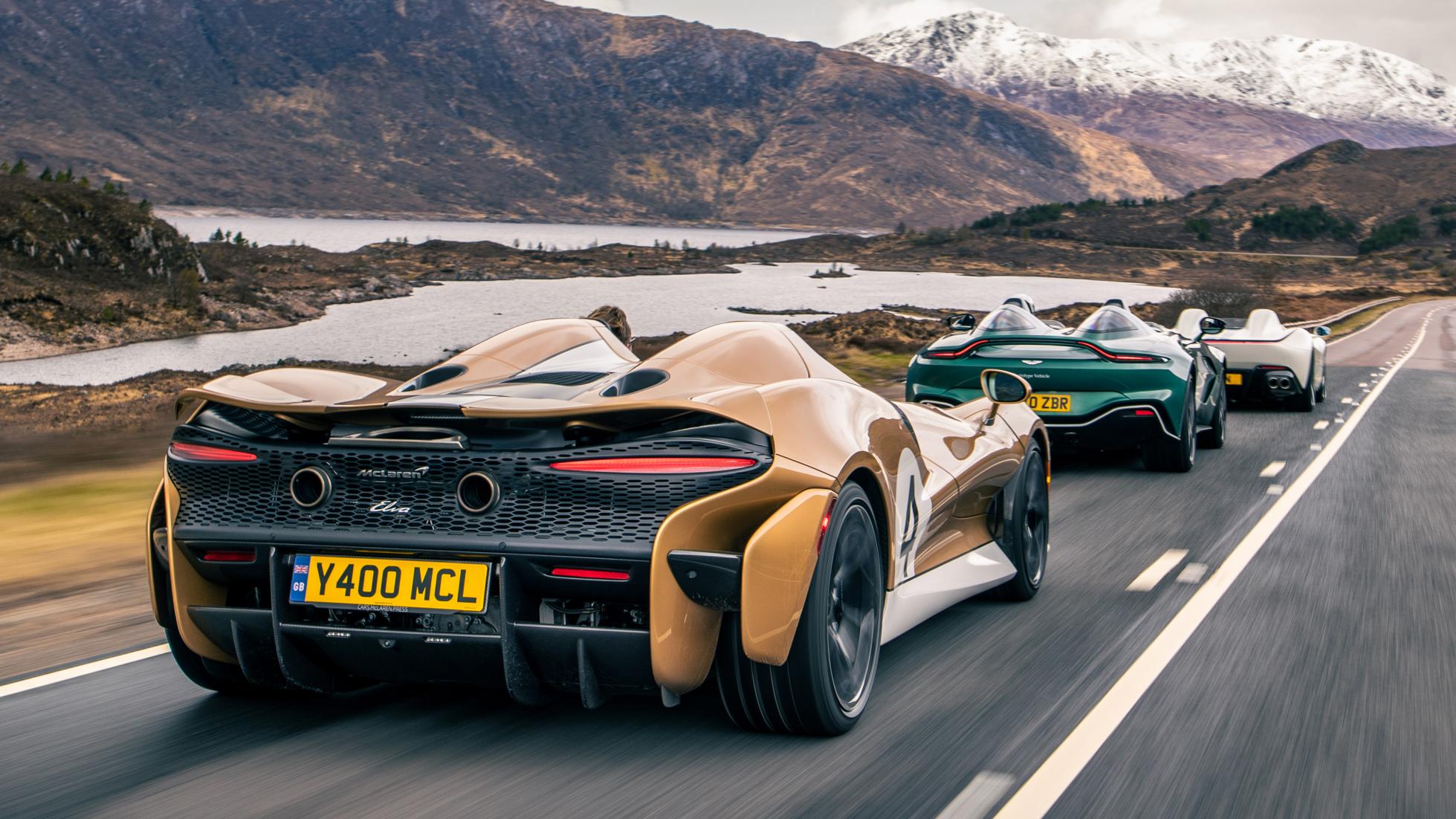
DRIVING – What is it like on the road?
Where other fast cars can leave you numb at speed, McLaren has become very good at engineering and developing fleet-footed, feelsome drivers’ cars that tickle and tease your senses at slow speed, then tighten up the tourniquet and fire a shot of serotine and adrenaline as the speed builds.
So it’s not hard to imagine that when you take out some of the fat and turn up the wick on a Senna with the Elva that you’ve got one hell of a weapon. And that’s before you’ve even got to the fact of it having no bloody windscreen.
The 804bhp twin-turbo V8 is responsive and utterly rampant in its delivery. The acceleration from 0-100kph (2.8secs) leaves you speechless. But when the traction is down and it’s really up to speed, romping between third and fourth gear is a Chiron-esque sensation as the 800Nm of torque battering rams the breath out of you.
For some perspective of how fast this thing is, the Elva hits 200kph in 6.7 seconds, which is a tenth quicker than the Senna and 1.1 seconds faster than the 720S. Let that sink in for a minute. And then recalibrate and realise you’re doing that with nothing protecting you from the elements.
Some say fast cars are like strapping yourself to a bomb, but nothing quite does it as effectively and realistically as the Elva. And as it’s got an actual engine with thrashing pistons, intake noise and exhaust, so there’s anger and theatrics to the performance – a build-up of energy as speed accrues - so that unlike an EV, it isn’t sickening to deploy.
However, unlike a motorbike, you don’t feel overly exposed and at risk – just like you’re in some mad four-wheeled IMAX. With no discernable boundaries of inside and outside (as long as it’s not raining) you can easily enjoy the experience that an unfiltered open-air performance of the environment delivers. But here’s the big question: does the McLaren Active Air Management System work? Well, it does make a difference, but it doesn’t quite live up to the claim of creating a ‘bubble of calm’.
Up to about 80kph, you’re still comfortable and capable of a blustery conversation with your passenger. Anything above that definitely spikes the bubble of calm as the wind whistles in and around your ears and starts to compete with everything. But that shouldn’t put you off.
It’s not an unpleasant experience in the dry (driving it through hail or rain is), it’s just different. Like cleaning your teeth with your opposite hand. But let’s remember, this isn’t new: Atoms and Caterhams have been doing this kind of thing for years.
But unlike them, the Elva takes the game to another level. Does it need over 800bhp? No. Does it need brakes that feel like they could stop the world? No. In fact, it’s kind of overegged it that way. The Elva and the sensation it serves up by having no screen and a wicked chassis would be fun with 300bhp. But would we turn down that 800bhp and those brakes? Hell no. It’s unbelievably impressive and playful in a way a Senna isn’t.
Where the 765LT and Senna felt like they took their performance too far, became too serious and sacrificed fun for the sake of speed, the Elva is the opposite. Less downforce, less weight, sensational road-biased balance and suspension set up, means that you end up driving it in a way you never would a Senna. But the places you can uncork it are few and far between unless you’ve got some sort of pregnancy craving for prison food. But because it has no screen, slow-speed driving is enhanced.
And McLaren has thought about that, going as far as creating a new quad exhaust to give your ears a high-end experience. Two of the pipes are for high resonance, two for low – making bassy frequencies bounce off the road, and throw high notes vertically where occupants can hear them scream.
And unlike its Aston and Ferrari contemporaries, it actually works because you can hear the thing while you’re driving it instead of wondering why they didn’t just make them windscreenless EVs.
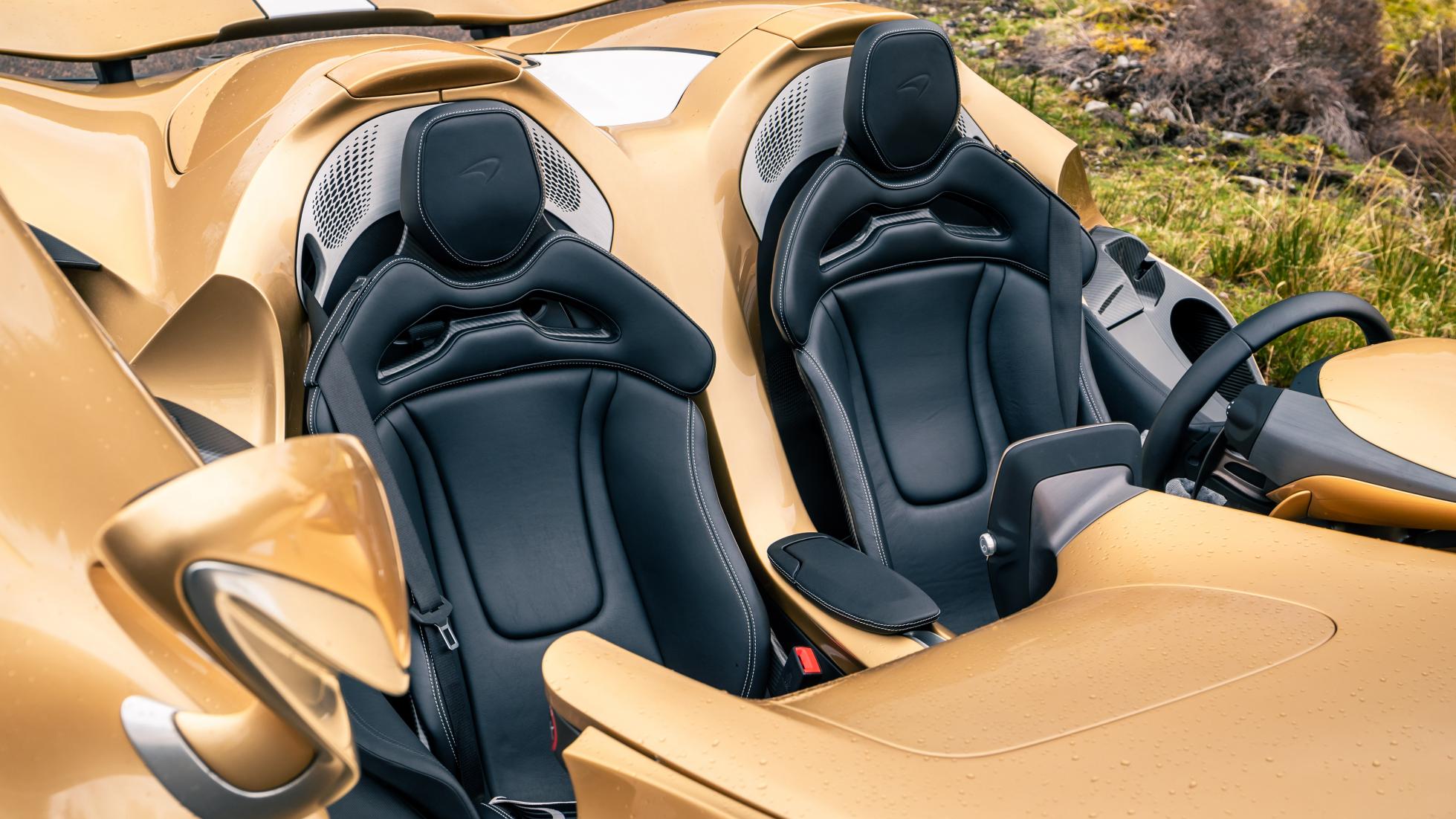
ON THE INSIDE – Layout, finish and space
Unlike the Ferrari Monza, there’s no awkward sill perch and leg swing necessary to get into the Elva. Simply let the gas struts send the weightless door skyward, step in and let your arse fall into the seat. But that is where the weirdness of the driving experience starts.
With no windscreen and roof, it’s odd as even when you’re inside, you’re still outside. Something McLaren has played on as the exterior panels cascade into the cabin so there’s no clear border between cockpit and landscape. It plays with your mind a bit. In a good way, like cleaning your teeth with your opposite hand.
McLaren designed new seats with a smaller squab for the Elva so you can access the footwell more easily and get leave without showing the paparazzi your undercracker’s gusset. However, they’re not as nearly as supportive and cosseting as the carbon ones you get in the Senna, 765LT and 600LT and you sit up and out of the cabin more than other speedsters, especially Aston’s where you feel like you’re about to be buried in a Victorian bathtub. The seats also operate on a new rocker that simultaneously lower and recline, or raise and bring you forward while the instrument binnacle moves as one with you.
Around the cabin there’s familiar McLaren switchgear and a small vertical screen, for controlling things like the heater, sat-nav, music and, more importantly, 15-level drift control. Aware that even the richest people in the world can’t control the weather, ‘Ultrafabric’ materials protect the cabin and those unique carbon fibre seats when the skies decide to open.
Where McLaren has tried something new is with the active panel. Where both chassis and engine modes used to be on switches buried at the bottom of the dash, they’re now accessed via a tilting toggle on either side of the pod on the binnacle behind the steering wheel. These rocker switches are a finger’s stretch from the steering wheel and apparently inspired by jet fighters HOTAS (hands on throttle-and-stick) mentality.
However, they lack the experience of the old switchgear. They feel rubberized and laggy in their execution where you want something to feel like you’re really ratcheting up the mental. Which you are by putting the drivetrain into maximum attack. You want more haptic clarity that you’re going into a scary place that might end with you having a face full of hedgerow.
OWNING – Running costs and reliability
Cash in your crypto and you can still get one. Amazingly, unlike a lot of exclusive cars that are sold out before we’ve even seen them, not all Elvas have owners – even having been watered down to just 149 units and now being offered with an optional windscreen.
Yep, McLaren will now happily build you an Elva with a windscreen, washer jets, sun visors and wipers instead of its impressive, but not infallible, Active Air Management System (AAMS). The windscreen-equipped Elva still does without a roof or side windows, mind, and there is a slight weight penalty.
But to us, it completely misses the point. Just get a 720S Spider. A lot of the £1,425,000 (RM8.2 million) you spend on an Elva is made up by the novelty and experience of not having a screen, something others simply can’t offer.
If you do decide to buy an Elva, McLaren offers some accessories to make the whole turbulence issue a bit more manageable for your eyeballs. At a minimum, you need some sunglasses to drive the thing otherwise tears will be streaming down your face quicker than listening to an Adele album after three litres of gin.
But being McLaren, they don’t want you in some Kanye shutter shades, so they have partnered with the company that makes ballistic glasses for the US Military and skydivers with reactive lenses. They look a bit suspect to be honest. But there’s also some bespoke, aerodynamically sculpted Bell helmets that create their own downforce so you don’t splutter maniacally while attempting the Elva’s 335kph top speed.
But prepare to be cold. Amazingly, given McLaren went to all the effort to engineer a wind-shifting system to redirect air around you, we’re amazed they didn’t bother with heated seats or even some vents near your knuckles to warm your hands. Even Caterhams do that… and they’re prehistoric. I’m sure they’ll be some McLaren fleeces in the gift shop though.
As always, if you want to ramp up the price of your purchase further, McLaren’s MSO division is on hand to customise your Elva however your deep pockets will desire, including heritage liveries from Gulf, Bruce McLaren’s superlight M1A and the all-conquering Can-Am icon of 1967, the M6A.
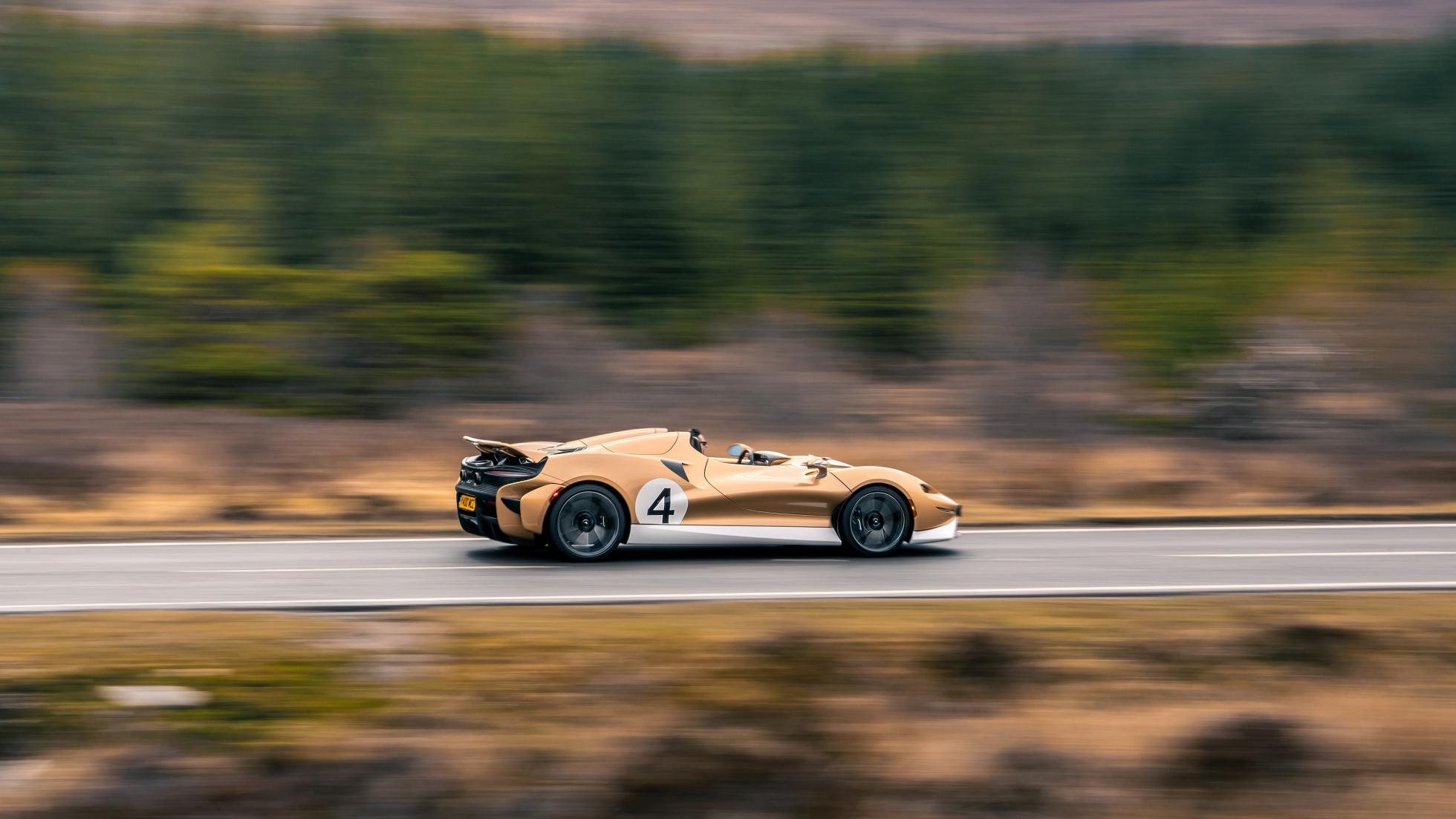
Verdict – Final thoughts and pick of the range
"The Elva is an acquired taste but an unbelievable experience. A showcase in cross-pollinating eccentricity and engineering in the search of speed"
Driving a McLaren Senna is a tsunami for your senses. So scalping the screen off and making an Elva puts your synapses on red alert. There’s so much more going on it can be overwhelming. But not in a scary way. In an exciting way.
It’s a car full of feeling and feedback, just with utterly uncalled for and outrageous performance. It’s driving in 4D with everything cranked up to 11; you feel the environment around you, sense the chill in the air as the temperature drops, smell the impending rainstorm and hear the loss of traction from the tyres when the droplets start to fall.
Then you follow McLaren’s official advice to drive faster and outrun the rain. Which is the pinnacle of thrilling. If you’re not into motorbikes and haven’t experienced proper open-top motoring, it’s riveting.
The Elva shows McLaren at its best. By taking the seemingly stupid idea of ripping off a Senna’s windscreen and sort of engineering a way around it to make it work via the very clever (if not a little temperamental) AAMS system, this speedster not only takes the brand somewhere new but also driving as a whole. Like its rivals, it’s utterly eccentric and a purchase will more than likely be supported by ego, but unlike its rivals, a lot more thought has gone into how it should be engineered. That’s very McLaren.
The Elva is so well set-up and accomplished, it’s good to drive on a shit road in the rain. But when you go somewhere on the planet that wasn’t made on a hungover Friday afternoon, say the north of Scotland, south of France or midwest of America, it’s like driving an 800bhp, 320kph postcard.
It won’t be to everyone’s taste and that’s fine. We’re just thankful that McLaren is trying something new. Something with a sense of humour and shed loads of speed. And if you can’t get your head around that, so be it – there are plenty of VW Golfs in the world for you to buy.
Overall Verdict: 9/10
